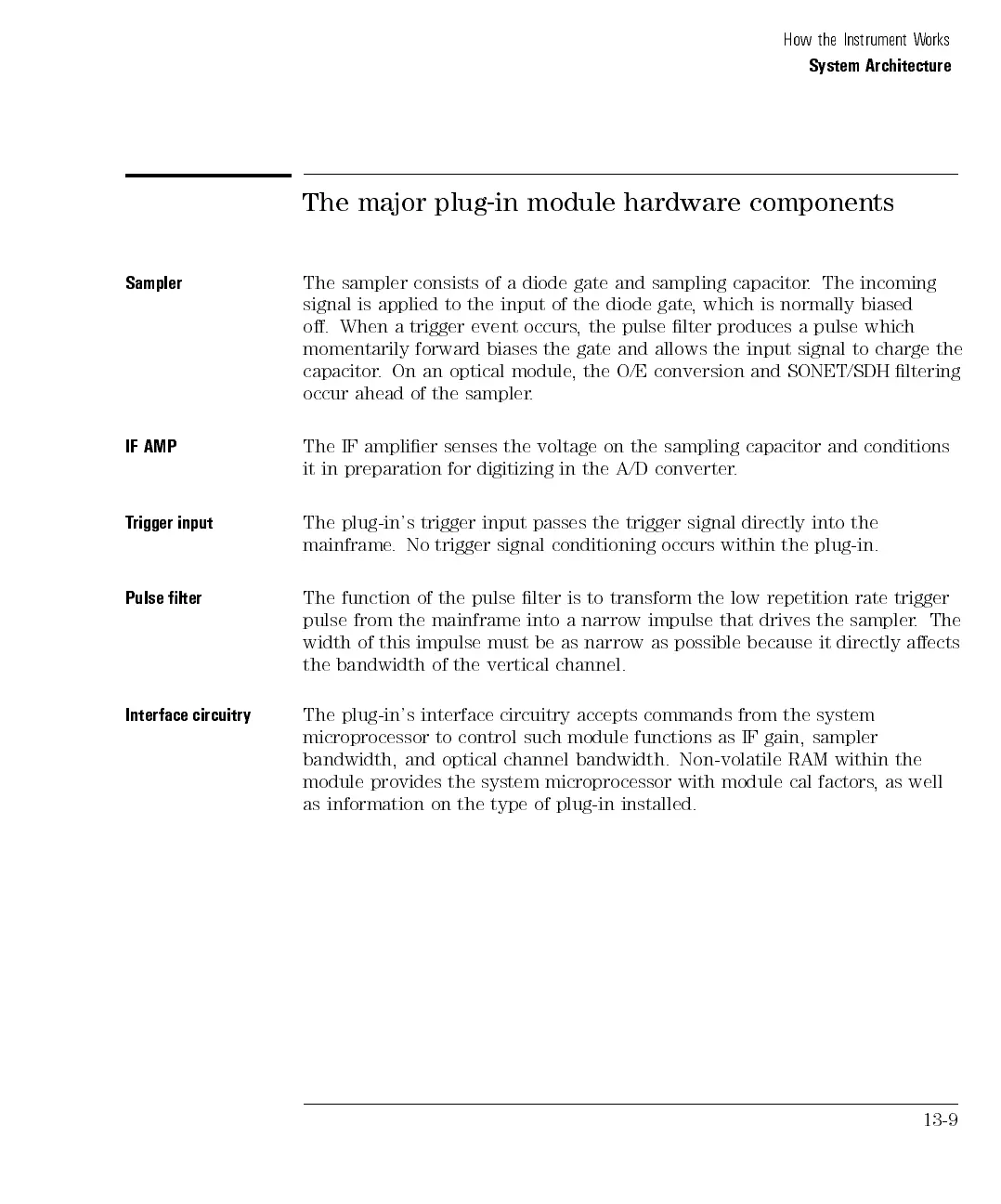How the Instrument Works
System Architecture
The major plug-in module hardware components
Sampler
The sampler consists of a diode gate and sampling capacitor. The incoming
signal is applied to the input of the diode gate, which is normally biased
o. When a trigger event occurs, the pulse lter produces a pulse which
momentarily forward biases the gate and allows the input signal to charge the
capacitor. On an optical module, the O/E conversion and SONET/SDH ltering
occur ahead of the sampler.
IF
AMP
The
IF
amplier senses
the voltage
on the
sampling capacitor
and
conditions
it
in
preparation
for
digitizing in
the A/D
converter.
T
rigger
input
The
plug-in's
trigger
input
passes
the
trigger
signal
directly
into
the
mainframe
.
No
trigger
signal
conditioning
occurs
within
the
plug-in.
Pulse
lter
The
function
of
the
pulse
lter
is
to
transform
the
low
repetition rate
trigger
pulse
from
the
mainframe
into
a
narrow
impulse
that
drives
the
sampler
.
The
width
of
this
impulse
must
be
as
narrow
as
possible
because
it
directly
aects
the
bandwidth
of
the
vertical
channel.
Interface
circuitry
The
plug-in's
interface
circuitry
accepts
commands
from
the
system
microprocessor to
control such
module functions
as
IF
gain,
sampler
bandwidth, and
optical channel
bandwidth. Non-volatile
RAM
within
the
module provides the system microprocessor with module cal factors,aswell
as information on the type of plug-in installed.
13-9

